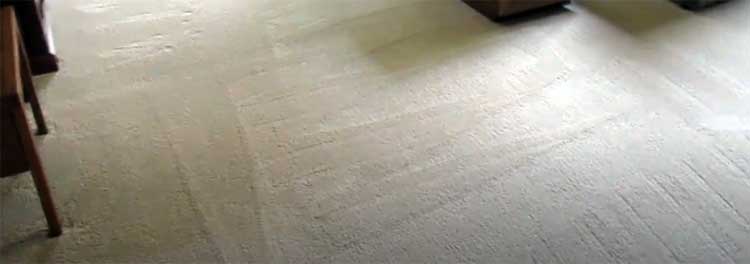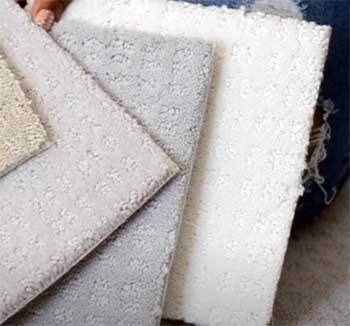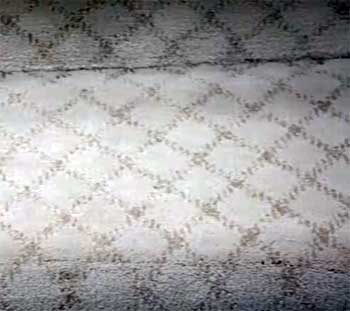I’ll cut to the chase: LifeProof carpeting is a game-changer for anyone who wants a stylish, durable, and low-maintenance floor that can handle the chaos of everyday life.
Whether you’ve got kids, pets, or a knack for spilling coffee like me, this carpet promises to keep your home looking fresh without constant fuss. After installing it in my own space, I’m convinced it’s worth every penny.
In this article, I’ll share my experience, break down the pros and cons, offer maintenance tips, and compare it to other brands to help you decide if it’s right for you.
My Journey With LifeProof Carpeting

When my wife and I moved into our new home, the old, stained carpets were the first thing we noticed. They screamed neglect, with faded patches and mysterious spots that no amount of scrubbing could fix.
We have a rambunctious toddler and a golden retriever who thinks muddy paws are a personality trait, so we needed something tough yet good-looking.
After weeks of research, we landed on LifeProof carpeting, specifically the PetProof line, sold exclusively at The Home Depot. The promise of stain resistance and pet-friendly durability hooked us, but I was skeptical—could any carpet really survive our household?
We chose the Gentle Peace II in a warm beige, hoping it would brighten our living room and hallway. The installation process was a breeze, thanks to The Home Depot’s free installation offer for purchases over $600.
The installers were in and out in a day, and I couldn’t believe how polished the result looked. The carpet felt plush underfoot, not stiff like some budget options I’d seen. Within the first week, our dog tracked in mud after a rainy walk, and I braced for disaster.
But a quick blot with a damp cloth and mild detergent, and the mess was gone—no trace, no stress. A month later, my toddler spilled juice, and again, the carpet shrugged it off like it was nothing.
What struck me most was how the carpet maintained its vibrancy. Even in our sun-drenched living room, the color didn’t fade. The low-pile texture didn’t show footprints or vacuum marks, which was a relief because I’m not one for constant upkeep.
It’s been six months, and the carpet still looks as good as day one, even in high-traffic areas like the hallway. My only gripe? The color selection felt a bit limited compared to other brands, but we found a shade that worked perfectly with our decor.
Honestly, living with LifeProof has been a revelation—it’s like having a carpet that’s as tough as I need it to be without sacrificing style.
The Upsides of Choosing LifeProof
- Unmatched Stain Resistance

Let me tell you, LifeProof’s stain resistance is the real deal. The carpet uses advanced synthetic fibers, often triexta or nylon, treated with a spill-shield technology that stops messes from sinking in.
I’ve cleaned up everything from red wine to pet accidents, and nothing has left a mark. The PetProof line, in particular, comes with a lifetime warranty against pet stains, which gave me peace of mind as a dog owner.
Unlike other carpets where stains seem to cling for dear life, LifeProof lets you blot away spills with just water and a mild cleaner. It’s like the carpet is saying, “Don’t worry, I’ve got this.”
- Durability for Busy Households
If your home is a revolving door of activity like mine, LifeProof’s durability is a lifesaver. The fibers are engineered to bounce back from heavy foot traffic, so you won’t see those dreaded flattened patches in your hallway or living room.
I’ve got furniture that gets moved around often, and the carpet doesn’t show matting or crushing. The PetProof models even have a special backing to block moisture, which means no worrying about spills seeping into the subfloor.
Plus, the 25-year warranty on wear and tear is a nice safety net—you know this carpet is built to last.
- Low Maintenance, High Comfort
LifeProof strikes a balance between being easy to care for and feeling luxurious. The low-pile options are a dream to vacuum, and they don’t trap dust or pet hair like thicker carpets do.
I vacuum once or twice a week, and that’s usually enough to keep things looking pristine. The texture is soft enough to feel cozy underfoot, which is a big win for my family since we love lounging on the floor during movie nights.
It’s hypoallergenic, too, which has been great for my wife’s allergies—no more sneezing fits from dust buildup.
- Budget-Friendly Options
You don’t have to break the bank to get LifeProof. Prices typically range from $2 to $6 per square foot, which is reasonable compared to premium brands.
For a family like mine, watching every dollar, this was a huge plus. You get high-end features like stain resistance and durability without the sticker shock.
The fact that it’s sold at The Home Depot also means you can often snag deals or bundle it with free installation, which saved us a chunk of change.
The Downsides You Should Know About
- Limited Color and Pattern Choices

While LifeProof offers a decent range of styles, I found the color and pattern options a bit restrictive.
If you’re after bold patterns or vibrant hues, you might feel shortchanged.
The selection leans heavily toward neutral tones like beiges, grays, and browns, which worked for us but might not suit everyone.
I wanted a pop of color in our office, but the brightest options were still pretty subdued.
If you’re set on a unique or trendy look, you might need to look elsewhere.
- Made in China Concerns
One thing that gave me pause was learning some LifeProof carpets are manufactured in China. I prefer supporting local production when possible, and I know some folks worry about quality control with overseas manufacturing.
That said, I haven’t noticed any issues with the craftsmanship of our carpet—it’s held up beautifully. Still, it’s worth considering if you’re particular about where your products come from.
- Not Ideal for Every Space
LifeProof shines in high-traffic areas, but it’s not a one-size-fits-all solution. In rooms where you want a plush, luxurious feel, like a formal dining room, the low-pile options might feel too practical.
I also learned that not all LifeProof carpets are compatible with radiant heating systems, which was a bummer since we considered installing one in our basement. You’ll need to check the specs carefully if you have specific requirements like this.
How To Keep Your LifeProof Carpet Looking Like New?
- Regular Vacuuming Is Your Best Friend
To keep your LifeProof carpet in top shape, vacuum at least twice a week. I use a vacuum with a HEPA filter to trap dust and allergens, which is especially important in our house with allergies and a shedding dog.
Focus on high-traffic areas like hallways and entryways, where dirt tends to accumulate. If you’ve got a PetProof model, regular vacuuming also helps lift pet hair before it embeds itself.
I’ve found that a quick pass with the vacuum keeps the carpet looking fresh and prevents debris from grinding into the fibers.
- Tackle Spills Immediately
Spills happen, but with LifeProof, they don’t have to be a crisis. The key is to act fast—blot, don’t rub, the spill with a clean white cloth and lukewarm water. I keep a spray bottle of water mixed with a drop of mild dish soap handy for quick cleanups.
For tougher stains like pet messes, follow the manufacturer’s guidelines, which usually involve blotting with a carpet-safe cleaner. I’ve never had a stain set in when I tackled it right away, so don’t procrastinate on this one.
- Deep Clean Annually
Every 12 to 18 months, give your carpet a deep clean to maintain its vibrancy. I rent a carpet cleaner from The Home Depot for about $30 a day and use a cleaner approved for synthetic fibers. Follow the instructions carefully—over-wetting can damage the backing.
For PetProof carpets, this step also helps refresh the odor-fighting technology. If you’re not into DIY, hire a certified professional. I’ve found that a deep clean makes the carpet look brand-new again, especially in our busy living room.
- Protect High-Traffic Areas
To extend your carpet’s life, use area rugs or runners in places like hallways or near entryways. I put a rug by our front door to catch dirt from shoes and paws, and it’s saved the carpet from a lot of wear. Rearranging furniture periodically also helps prevent permanent indentations.
If you’ve got pets, trim their nails regularly to avoid snags—my dog’s claws were a menace until we got on a consistent trimming schedule.
- Invest in a Quality Carpet Pad
A good carpet pad is non-negotiable for LifeProof. I went with the LifeProof polyethylene cushion underlayment, and it’s made a huge difference in comfort and durability. It adds a layer of moisture resistance and makes the carpet feel plusher.
Rotate the pad every few years to ensure even wear. Trust me, skimping on the pad will make your carpet feel flat and wear out faster.
How LifeProof Stacks Up Against Other Brands?
- StainMaster: The Pet-Friendly Rival

StainMaster, sold exclusively at Lowe’s, is a direct competitor to LifeProof, especially for pet owners.
I looked at their PetProtect line, which also boasts a 25-year pet stain warranty and a wide range of nylon and polyester options.
StainMaster’s color selection is more extensive, with over 4,000 designs compared to LifeProof’s 1,200.
However, I found StainMaster’s prices slightly higher, often starting at $2 per square foot but creeping up to $8 for premium styles.
While StainMaster’s carpets are soft and durable, their stain resistance felt comparable to LifeProof’s, not noticeably better. For me, LifeProof’s lower price point and The Home Depot’s easy ordering tipped the scales.
- Shaw Floors: The Premium Choice
Shaw Floors is a heavyweight in the carpet world, known for premium quality and sustainability. Their Pet Perfect collection caught my eye for its eco-friendly certifications and 20+ year warranties.
Shaw’s carpets use a mix of nylon and solution-dyed fibers, similar to LifeProof, but they offer more luxurious textures and patterns. The downside? Shaw’s prices can climb to $10 per square foot, which was out of our budget.
LifeProof gave us similar durability and stain resistance for less, though I’ll admit Shaw’s plush options felt a tad more indulgent underfoot.
- Anderson Tuftex: The Stylish Contender

Anderson Tuftex is all about chic, modern designs, and their nylon carpets are stunning. I was tempted by their textured patterns, which felt more artistic than LifeProof’s simpler styles.
Their pet-friendly line is durable, but the warranties are shorter—typically 10 to 15 years compared to LifeProof’s lifetime stain coverage. Anderson Tuftex also costs more, often $5 to $8 per square foot.
For a budget-conscious family like mine, LifeProof delivered the same practicality with a lower price tag, though I envied Anderson Tuftex’s bolder aesthetic.
- Doma: The Eco-Conscious Option
Doma’s carpets are a favorite for eco-conscious buyers, with wool and synthetic blends that prioritize sustainability. Their 20-year warranty for residential use is solid, but it doesn’t match LifeProof’s lifetime stain protection.
Doma’s room visualizer tool was fun to play with, helping me imagine different styles in our space, but their selection felt overwhelming.
Prices are comparable to LifeProof, starting around $3 per square foot, but I found LifeProof’s stain resistance more reliable for our pet-heavy household. Doma’s natural fibers are great for air quality, but they require more upkeep than LifeProof’s low-maintenance fibers.
Frequently Asked Questions (FAQ)
I’d say LifeProof is more than just good—it’s a fantastic choice for busy households. The stain resistance is top-notch, handling everything from pet messes to kid spills without a hitch. It’s durable, budget-friendly, and feels comfortable underfoot. The only catch is the limited color options, so if you’re after something bold, you might need to look elsewhere. For practicality and value, though, LifeProof has been a winner in my home.
The LifeProof carpet pad, like their polyethylene cushion underlayment, is a solid investment. It adds comfort, protects against moisture, and extends the carpet’s life. I’ve noticed it makes our carpet feel plusher and helps with sound dampening. Compared to generic pads, it’s designed to work seamlessly with LifeProof carpets, especially the PetProof line. Just make sure it’s compatible with your specific carpet model.
Yes, LifeProof is manufactured by Mohawk Flooring, a giant in the industry known for quality. This gave me confidence in the brand, as Mohawk’s expertise backs LifeProof’s stain resistance and durability. It’s sold exclusively at The Home Depot, which makes it easy to find, but you’re still getting Mohawk’s reliable craftsmanship.
Why LifeProof Is My Go-To and Should Be Yours?
After living with LifeProof carpeting, I’m hooked. It’s tough enough to handle my chaotic household, stylish enough to elevate our decor, and easy enough to maintain that I don’t dread cleaning.
Whether you’re dealing with pets, kids, or your own clumsy moments, LifeProof delivers without draining your wallet. I’ve compared it to other brands, weighed the pros and cons, and shared my tips to keep it pristine.
Trust me, this carpet is a smart choice for anyone who wants a worry-free, beautiful floor.
